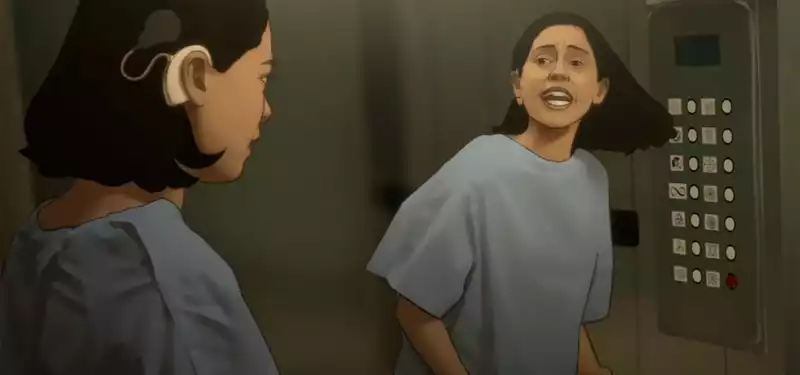Sep 9, 2019
The bold mix of animation techniques in Amazon's "Undone" is a wake-up call to the television industry.
Techniques to an animator are like instruments to a musician. Different techniques allow for a textured and expressive approach to animated storytelling, and different production techniques can be combined to create a visual experience that is impossible in other media.
The unique results possible by mixing techniques are evident in every clip we've seen so far from Amazon Prime's upcoming series "Undone," which debuts on the streaming service this Friday, September 13. The new behind-the-scenes look at the show's production process posted below offers insight into the custom blending of rotoscoping, drawn animation, CG, and oil painting.
In the video, Tommy Pallotta, executive producer of the series, describes the show's unusual blending technique: "I think 'Undone' is simultaneously real and unreal and eerie. [This innovative mash-up is the work of Dutch showrunner Hisko Halsing, who is a newcomer to Hollywood animation, but is no stranger to the independent animation world with award-winning shorts like "Junkyard" and "Seventeen," as well as Kurt Cobain documentary Montage of Heck.
One reviewer described it as "indescribably great television" and "the best [show] Amazon has ever produced," while another viewer called it "a masterpiece" that is "one of the most beautiful shows in years."
The making-of video does not go into production details, but one thing is clear: Halsing and his team completely disrupted the traditional television pipeline for Undone. Halsing and his team completely broke the traditional television pipeline with "Undone. No other television production has been made using this production process, which is somewhat surprising considering how many animated series are produced annually. In an industry where technology is concentrated on the choice between 2D and CGI, this is significant.
In the American animated television industry, showrunners have surprisingly little choice in how best to tell a story. The typical debate about whether animation should be 2D or CG arises from a lack of imagination about the different ways to produce animation and the endless ways to integrate the technologies. To compare animation techniques to musical instruments, let's say the music industry requires musicians to write songs using only two instruments, say a piano and a guitar. Such a restriction would be crippling to the music industry. Yet American animation has been languishing for years within these almost unimaginably narrow expressive possibilities.
It need not be so: Halsing's mixed-technique approach in this series, while bold for commercial television animation, is actually common in independent filmmaking. After all, it is the filmmaker's job to find the right combination of techniques to tell a story. Attend an animation festival and you will see an exciting array of technical approaches and stylistic choices that are possible in animation. [The festival is also home to some of the most exciting new animated films ever made: Becca's Bunch, Gumball, Love, Death, and Robots, to name just a few. Amazon's new series follows in the recent tradition of these shows and may be one of the most effective mixed-media approaches to the series format. Its liberal use of technique will go a long way toward evolving the public's perception of the potential of the medium of animation, and will hopefully encourage other creators to use the medium to its full potential.




Post your comment